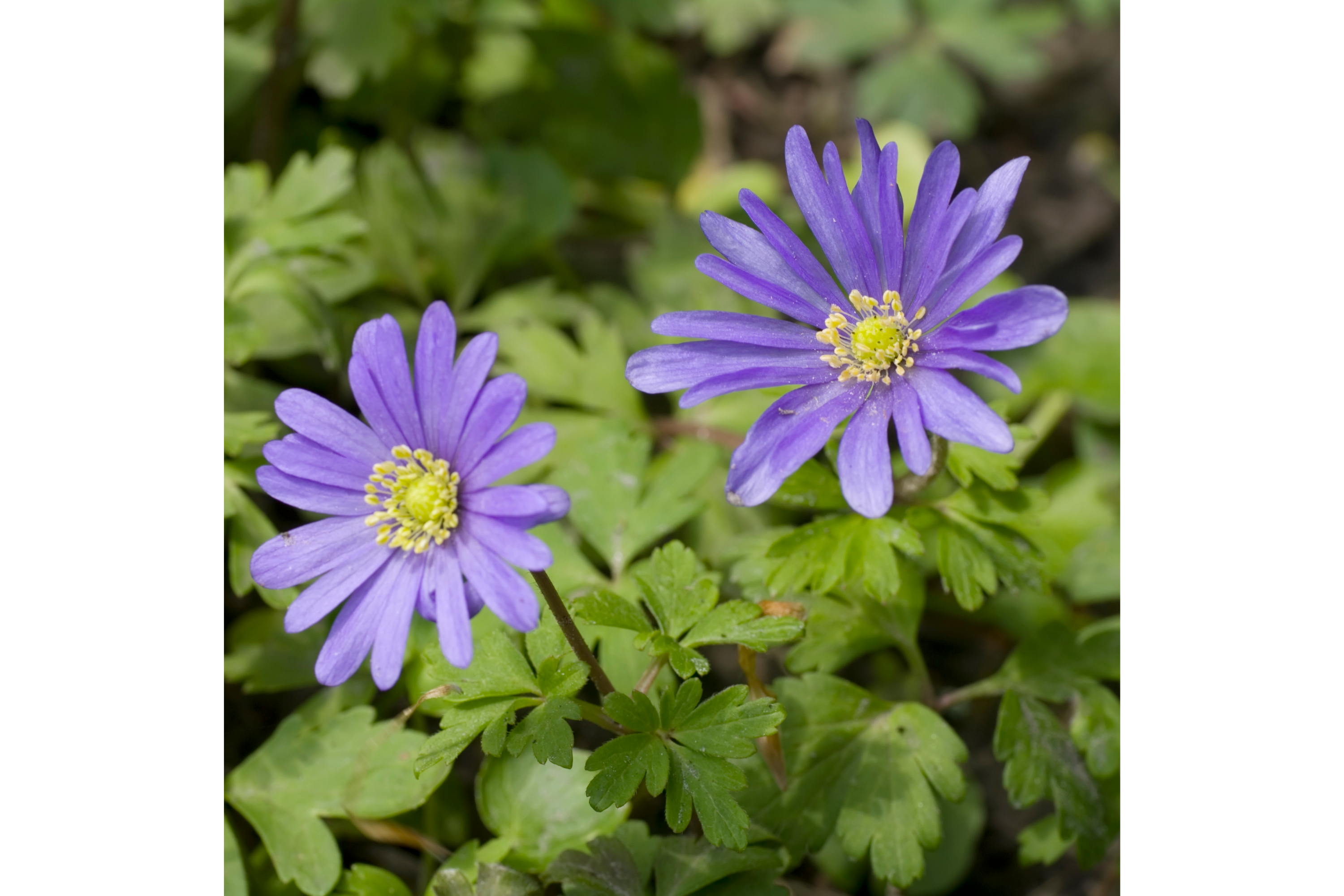Apennine anemone
(Anemone apennina)

Description
Anemonoides apennina (syn. Anemone apennina), the Apennine anemone or blue anemone, is a rhizomatous perennial plant in the family Ranunculaceae. It is native to southern central Europe, taking its name from the Apennine Mountains, but widely naturalised elsewhere in Europe, including the United Kingdom. It can be confused with Anemonoides nemorosa which it resembles. It grows to 20 cm. In early spring it produces single blue flowers above ferny foliage, which dies down in summer. The flowers are about 3.5 cm across, with 10-15 narrow petals. The leaves are palmate with dark green 3-lobed, toothed leaflets. The leaves are hairy underneath, which is how this plant may be distinguished from the similar Anemone blanda. It is especially valued for its ability to colonise deciduous woodlands, but it is also found in open scrub, under park trees, and near former habitation. This plant has gained the Royal Horticultural Society's Award of Garden Merit. Eating A. apennina may cause mild stomach upset, and contact with the skin may cause irritation. Anemone is a genus of flowering plants in the buttercup family Ranunculaceae. Plants of the genus are commonly called windflowers. They are native to the temperate and subtropical regions of all continents except Australia, New Zealand and Antarctica. The genus is closely related to several other genera including Anemonoides, Anemonastrum, Hepatica, and Pulsatilla. Some botanists include these genera within Anemone. Anemone are perennials that have basal leaves with long leaf-stems that can be upright or prostrate. Leaves are simple or compound with lobed, parted, or undivided leaf blades. The leaf margins are toothed or entire. Flowers with 4–27 sepals are produced singly, in cymes of 2–9 flowers, or in umbels, above a cluster of leaf- or sepal-like bracts. Sepals may be any color. The pistils have one ovule. The flowers have nectaries, but petals are missing in the majority of species. The fruits are ovoid to obovoid shaped achenes that are collected together in a tight cluster, ending variously lengthened stalks; though many species have sessile clusters terminating the stems. The achenes are beaked and some species have feathery hairs attached to them.
Taxonomic tree:







